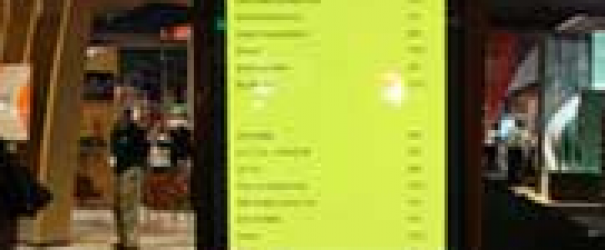Painful and shocking economic trends are beginning to emerge as a result of the Great Recession, which soon might be known as the Great Transition. The American debt fueled, consumer driven basis of our economy is quickly slamming on the brakes. The middle class is shrinking, credit is maxed out and liquidity normally spent on materialistic whims is tapped out. Throw in inflation and a middle class wage that has been stagnant for four years running, and retail sales will face a rude awakening. What can the world of retail expect in the next few years and how does this affect marketing?
Face it, many Americans are oblivious to the tremors of change that we already are feeling. Many people don’t want to have to change their lifestyle, thus ignoring the painful reality is easier. However, this will not stop reality. Reality is already changing the mall experience. Mostly gone from malls now are the bookstores, music/video stores, independent electronics retailers and small housewares stores (now mostly handled by large anchor stores). Children’s clothing stores might soon follow suit. The things that will remain protected at malls will be movie theaters, food courts and women’s clothiers, as women will always enjoy the brick and mortar shopping experience, an experience that will become old fashioned for some.
The brick and mortar shopping experience is becoming extinct, thanks to mega Internet retailers like Amazon. This is already clearly evident and one great example is Best Buy. Best Buy is a rusting, crumbling hulk of its former big box store greatness. Share price is falling, and stores are closing, as the customers evaporate. Most people now just go to Best Buy to use it as an Amazon showroom. As the economy shrinks to a sustainable level, many big box retailers will turn to dust. Those likely to survive are Walmart, Sams, Home Depot and Lowe’s. Consider the rest all potential visitors to the chopping block: Target, Staples, Office Depot, Office Max. What do these stores sell that Walmart or Amazon doesn’t? If only a handful of stores remain, while online sales boom exponentially, it’s clear then that driving will become a necessity, as opposed to a luxury.
Between the upward creep of gas prices and the number of people losing their cars to repossession or just willfully selling them to save money, this will radically change American culture. For starters, if we buy more of our stuff online, then we won’t need such large vehicles to transport our stuff home from stores. With paychecks stagnating and gas prices climbing, the few remaining big box retailers will have to strategically place themselves in a close vicinity to high density population centers. Retailers will have to come to consumers, rather than the other way around. The casualties incurred by this massive change will be mom and pop stores and strip malls. Mom and pop stores were already becoming extinct and there will be virtually nothing that independent retailers can sell cheaper than the surviving big box giants. Soon or later, the giants will figure this out and redesigned shopping zones will appear, featuring the likes of Walmart, Sams, Home Depot, Lowe’s, etc. So with this premonition of the future, how can marketers use this to their advantage?
The best mindset to apply most likely is K.I.S.S., as in “keep it simple, stupid.” Sure, marketers will still use all the online tricks and gimmicks to maximize their online presence, like SEO and whatnot, but the old might become new again. If people will be traveling less, and they will be congregating in one main shopping area, think about how to maximize exposure without making it too complex. The popularity of in-store promotions might see a resurgence if there are a guaranteed 1,000 people in the store instead of 100. Also keep digital billboards in mind. Roads and parking lots that see high density traffic will be perfect for advertising, as views will markedly increase. Despite the slow progress of QR codes, they might become a marketing gold mine as well. More eyeballs in parking lots and checkout lanes, means opportunities to scan. Lastly, much like high density brick and mortar areas, think about high density sites online. As mentioned earlier, already well-known sites like Amazon will only grow in popularity. But as online sales increase, new anchor sites will emerge. Be perceptive and be on top of this new generation of anchor sites and try to tie into them as much as possible. Even consider advertising on FedEx and UPS, as more and more people will be tracking packages online. One of the main tenets of marketing will be more critical than ever, which is to be able to adapt to change, as quickly as the change occurs.
Brian Lakeman is Author and Brand Manager for www.Activ8me.net.au, leading satellite internet provider in AU.







